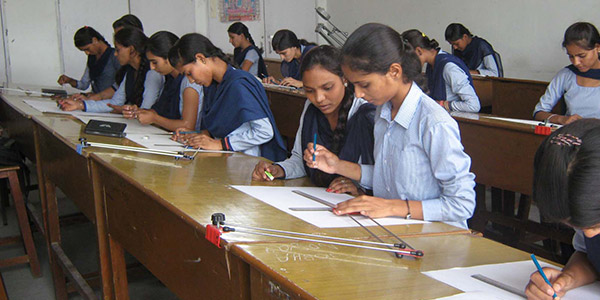ITI In Draughtsman (Civil)
Draughtsmen and women, or they also called as drafters, translate the ideas and rough sketches of engineers, architects and scientists into detailed drawings. Draughtsmen prepare technical drawings and plans used by production and construction workers to build everything from manufactured products such as spacecraft or industrial machinery, to structures such as office buildings or oil and gas pipelines.
Their drawings provide visual guidelines, showing the technical details of the products and structures, specifying dimensions, materials to be used, and procedures and processes to be followed. Drafters fill in technical details, using drawings, rough sketches, specifications, codes and calculations supplied by engineers, surveyors, architects or scientists.
They use various drafting tools, engineering practices and mathematics to complete drawings, including technical handbooks, tables, calculators and computers.Traditionally, draughtsmen sat at drawing boards and used compasses, dividers, protractors, triangles and other drafting devices to prepare a drawing manually.
Most draughtsmen now use computer-aided drafting (CAD) systems to prepare drawings. These systems employ computer workstations which create a drawing on a video screen. These systems make it easy to prepare many variations of a design and allow it to be viewed from angles not usually available with traditional drafting methods. The drawings are stored electronically so that variations, revisions or duplications can be made easily and quickly. Although this equipment has become easier to operate, CAD is only a tool. People who produce technical drawings using CAD still function as drafters, and need most of the knowledge of traditional drafters, relating to drafting skills and standards, as well as CAD skills.
Some drafting work, however, continues to be done by traditional manual and tracing methods in addition to using computers to draw designs. Drafters prepare detailed drawings based on sketches and specifications prepared by architects, engineers or other designers. Projects differ radically and specialization in preparing drawings in the various fields is therefore necessary.
Skills Required
A draughtsman should :
1. be able to transfer concepts onto paper;
2. have patience and perseverance;
3. be meticulously accurate;
4. enjoy doing detailed work;
5. be able to concentrate for long periods of time;
6. have three-dimensional perception;
7. have good vision;
8. have good eye-hand coordination and free-hand drawing skills;
9. be interested in and have a flair for computer work;
10. have stamina (at times standing is required).
Nature of Job
1. sitting or standing for long periods of time.
2. experiencing eye strain as a result of doing close work.
3. having to work overtime to meet deadlines.
4. doing accurate and precise work.
5. having good promotional opportunities.
6. travelling to other offices or work sites to gain first-hand information about a project.
Syllabus
- Compulsory Subjects : Mathematics, Physical Sciences.
- Recommended Subjects : Engineering and Graphic Design.
Higher Studies
Drafters prepare detailed drawings based on sketches and specifications prepared by architects, engineers or other designers. Projects differ radically and specialization in preparing drawings in the various fields is therefore necessary:
Areas of drafting specialization include
1. Aeronautical.
2. Architectural.
3. Civil Engineering.
4. Electrical Engineering.
5. Mechanical Engineering.
6. Structural Engineering.
7. Town and Regional Planning.
8. Geological.
9. Landscape.
10. Cartographical (maps).
11. Mining.
12. Marine.
Employers
Architectural and engineering firms
- Such organizations as : Mittal Steel, Eskom, Sasol, Transnet.
- Municipalities.
- Construction companies.
- Metal manufacturing companies.
- Machinery construction companies.
- Mining companies.
- Transnet.
- Contract draughting firms.
- Government departments, such as Water Affairs, Agricultural Economics, and Marketing.
- Mineral and Energy Affairs.
- Self-employment, doing freelance work or with enough experience and capital, can start.
- own business.
 Courses and Colleges after 10th After 10th, What Next?
Courses and Colleges after 10th After 10th, What Next?








